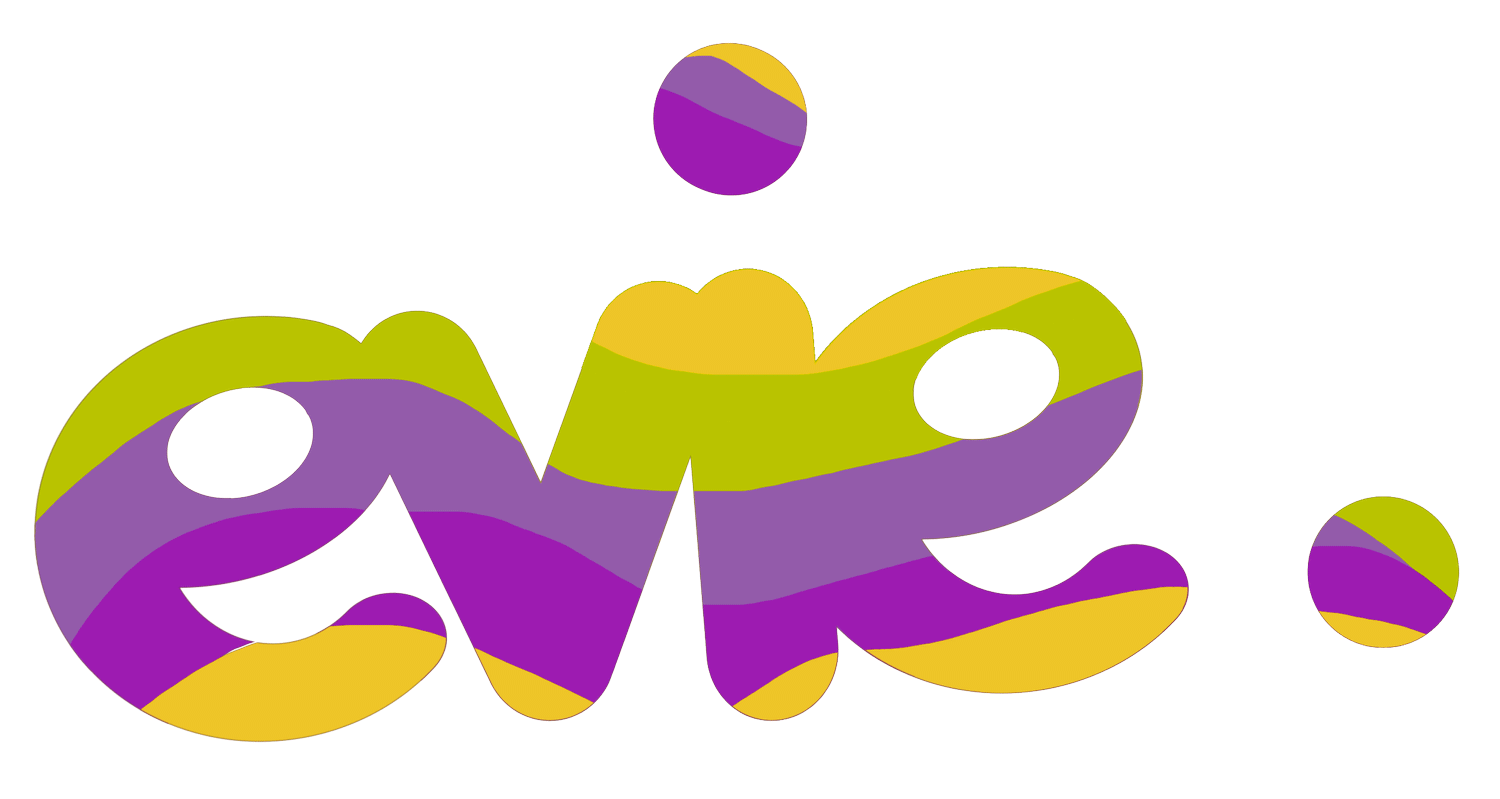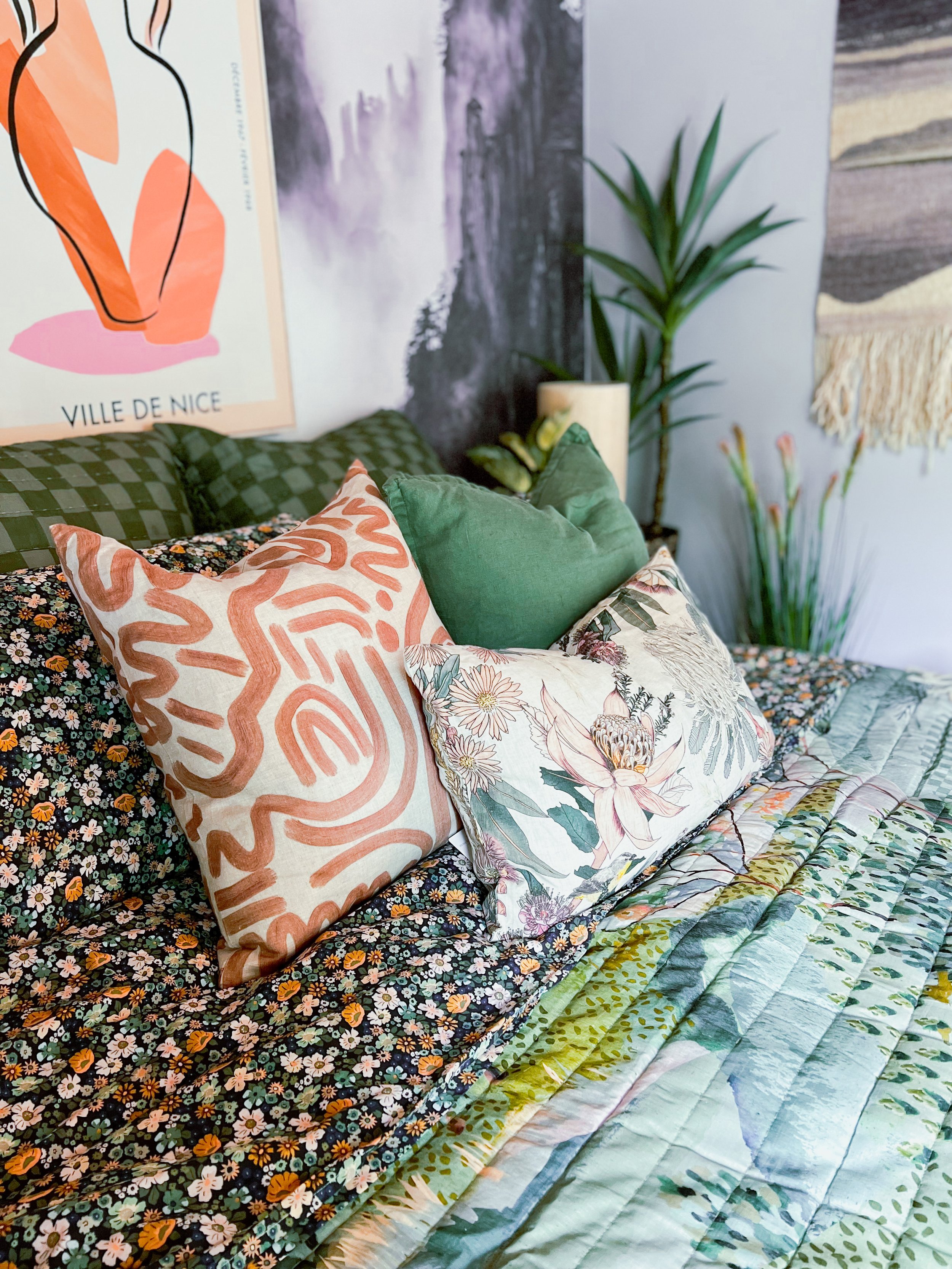A pattern mixing masterclass
This year i’m partnered with Adairs, putting my own maximalist spin on styling their fun and creative products. Here’s a guide I’ve put together using Adairs products to show different ways to mix and match patterns! The steps I use can be applied to anything and everything. They’re something to explore and experiment with, and soon you’ll be fearless in your clashing!
Pattern is a way to add layers to your home, and to create a look that is unique to you. It’s also a great way to change up your decor without starting from scratch by mixing patterns in different ways. A subtle pattern shift can take a room from summer to winter, from childish to adult, from basic to luxe. Knowing how to combine patterns within a room is a powerful skill, and it’s a lot of fun too. It also means when you see that must-have cushion, you’ll know just how to incorporate it with what you already have!
Pattern mixing is an art and like art, practice makes perfect. Adairs makes it easy to mix and match patterns like a pro but here are a few aspects to think about when combining patterns and print.
I’m using the Green Harmony quilt cover as my hero piece. This is a beautiful quilt cover with a painterly abstract landscape style print on one side, and a coordinating print on the reverse in sage green tones - perfect for a restful bedroom!
Start with basics
Double sided bedding is the gateway to pattern mixing, as it’s already been done for you. Use both prints by folding back the quilt and experiment with proportions here by how much of the reverse you show. With a bold print it can look great to have it folded back over the lower half of the bed and can look really different to having the one pattern lying flat over the entire bed.
The rule of thirds
A luxurious bed is easily created by imagining it in three sections. The top third being your pillows, the bottom third being a throw or comforter and the middle section usually being your duvet or quilt cover. Visually this makes the bed look less like a big, flat square, and draws the eye up to the pillows and cushions. This means that while your main duvet design is central to your decor, it also needs accompanying items to bring it together.
If you’re new to pattern mixing the easiest way to give it a go is by adding a throw to the end of your bed and some contrasting cushions to the top - play around to see what you like, and push yourself to be bold (fun cushions are a great way to do this!).
Neutrals matter
Don’t forget the sheets! Give just as much thought to the basics you’re going to use with your patterned pieces. It’s a common misconception that stark white looks great with everything, sometimes it can jar with the colours and prints you’re using. Instead of defaulting to white, look to the pattern for a neutral - it might be a pale pink or blue, or in this case I chose the Mark Tuckey Organic Cotton Chambray sheets in Oatmeal for a softer look that pairs with the gentle colours in the quilt.
Textures count
When you think of mixing prints, the thought of clashing patterns might bring you out in a cold sweat BUT it doesn’t have to be a full colour explosion. You can use neutral tones and instead focus on texture as your secondary patterns. To keep this scheme paired back and light, I opted for the Pasquale Linen Throw that has a subtle checked pattern that echoes the checkered element in the quilt. I then added in pillowcases with another stitched geometric pattern, and finished with a pair of soft linen green cushions. Often the reverse side is a more subdued pattern, so try flipping your euro pillows round for a gentler pattern injection.
Ok, let’s take this up a notch and really have some fun with it because the possibilities really are endless. You can take one main print and dress it up an infinite number of ways.
Colour schemes
When choosing accompanying prints and patterns pull colours from the main piece. Choosing main colours (in this instance, green) is always going to look cohesive, but consider drawing from a secondary colour in the print. Why? Well, you already know that the colours work really well together, but by expanding the palette it creates more of a story, and appears more natural and relaxed. You can use the accompanying colours to impact how warm or cool a colour scheme feels, and to link your bedding to other decor in your room.
In this instance I chose the soft browns and rusty tones within the green print, by making them more of a feature it warms up the whole scheme and ties in with the colour of the bed.
You can update your room for the seasons by adjusting the colour levels - light and bright for summer, warm and cozy for the colder months.
Combining patterns
The simplest way to combine patterns is to take one from each pattern family - one stripe or geometric, one floral, one ethnic, and one abstract or painterly, that are linked by colour. Following this rule whether you have 2 cushions or 200 cushions will ensure a deliciously rich, but cohesive combination that looks effortless.
Scale
The scale of patterns should be varied so that your eye can “read” them separately. When multiple prints are the same scale they can become a bit of a visual soup and you lose the impact. If you have a ditsy floral print sheet set, consider pairing it with a larger scale print on top.
It’s not just fabric
Mixing patterns is not confined to soft furnishings - your art and decor choices tie in too! You can use the colours in art to add another dimension to your styling. This fun Vintage Coral Ceramiques poster was just what this room needed to tie it all together, while some faux plants bring green to the rest of the room.
Add a wildcard
Last, but not least my personal favourite thing to do when mixing patterns is to add a “wildcard” - an unrelated pop of colour or piece that disrupts everything a bit. I find this is your opportunity to add something that makes you smile and reveals more about your personality. Because ultimately, pattern mixing is all about personality, creating a home you love and having fun with it one (or two) cushions at a time!
“Ultimately, pattern mixing is all about personality, creating a home you love and having fun with it one (or two) cushions at a time!”




















